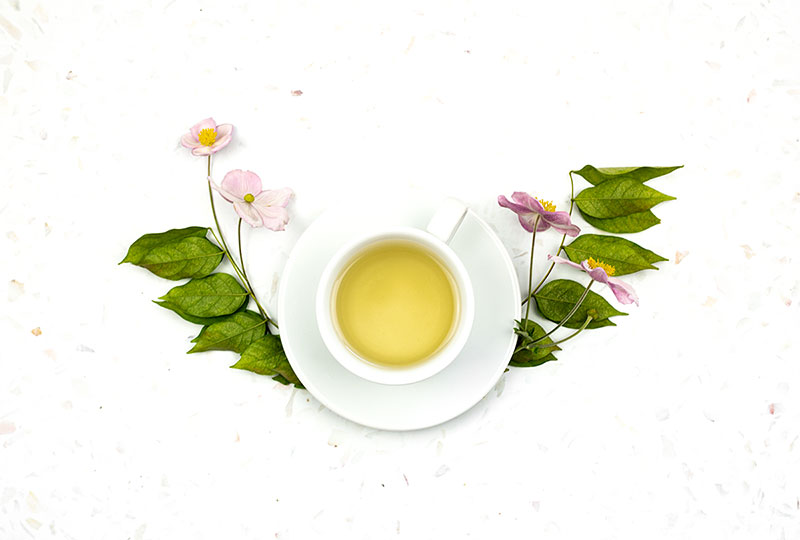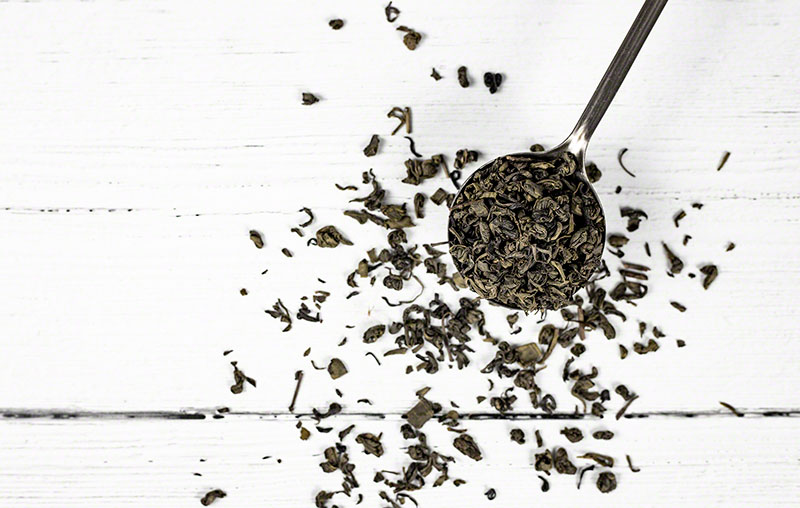Green Tea FAQ
Green tea started gaining popularity worldwide about 20-30 years ago. This mysterious drink was said to have weight loss benefits, but a bitter flavor. At first it was mostly available in tea bags simply named “green tea.” One of the first available loose leaf green teas were Chinese sencha and Gunpowder. However, they were also bitter, mostly because they were always over-brewed. Now, many years later much has changed. With thousands of green teas available in the western market, we have a lot to choose from. Scientists are working hard to prove dozens of different benefits and are quite successful at it. And, the flavor of green tea doesn’t need to be bitter anymore. All this made green tea more popular than ever. In our green tea FAQ, we are answering 7 most asked questions about green tea.


Is it possible to drink too much green tea?
Green tea contains caffeine and EGCg, both potentially dangerous in large quantities. Although it’s quite difficult to reach those levels by drinking home-brewed green tea, it doesn’t mean you shouldn’t be careful. A safe dose of EGCg per day is around 500 mg per day. Amounts higher than 800 mg per day taken for 4 months may influence the liver,[1] especially in people with higher BMI. Most cases of liver damage caused by EGCg were actually related to green tea supplements taken for weight loss goals, rather than traditionally brewed tea. Liver damage caused by drinking a few cups of green tea per day is, in fact, very rare. A cup of green tea can have anywhere from 2.3-203 mg of EGCg per 100 grams of drink[2], which is a very wide range. Therefore, 3-5 cups of green tea daily will very likely be a safe dose. You can increase the recommended dose by using the multiple-steeping technique. Dangerous high doses are usually available only in supplements. The second potentially dangerous substance in green tea is caffeine. All green teas contain caffeine, but levels in some of them might be low. A cup of green tea can have anywhere from 10 to over 100 mg of caffeine per cup. Roasted mature leaves like bancha will have less caffeine than fresh shaded steamed teas like gyokuro. Gyokuro is superior to most black teas in terms of awakening effect. Safe dose for a healthy individual is around 400 mg of caffeine per day, a level rarely met by drinking 3-5 cups of only green tea daily. Both EGCg and caffeine need a certain temperature and steeping time to be extracted into water. That means that you will never get the full amount of caffeine and EGCg from the leaves. You can reduce the levels by using cooler water and shorter steeping time or increase them by using boiling water and infusing leaves for a very long time. This, however, will not be pleasant to drink at all.
Dragon Well green tea
What are the cons of drinking green tea?
Side effects of drinking green tea may include “nausea, vomiting, dehydration, lethargy, dizziness, insomnia, tremors, restlessness, confusion, diuresis, heart rate irregularities, psychomotor agitation and stained teeth[3]”. Those side effects are quite rare unless you are suffering from other health problems and have an over-sensitivity to certain ingredients. Drinking green tea can have some other cons too, especially if you are choosing tea with unknown origin. Except for the already mentioned potential overdose on caffeine and EGCg, green tea may contain artificial colors, high levels of chemicals, pesticides and herbicides and heavy metals. Not all of the teas are grown following ethical principles. Tea in tea bags are easier to color, flavor and secretly mix with other ingredients because they are only tiny particles hidden in a tea bag. Loose leaf tea is a safer option, although it may contain harmful substances too. For example, even organic tea may have high levels of lead, because they are not regulated in organic production. So, how can you be sure you are drinking safe tea? First, avoid buying tea from unknown sources or teas that are too cheap to be true. If the usual price of one tea is $10 per 100 grams, then finding the one that costs $1 is rarely a lottery win—especially if it’s labeled as premium and rare.Can green tea reduce weight?
Studies suggest that green tea might help you reduce weight. How much impact will tea have on weight loss will depend on many factors:1. The quality of tea
Five cups of tea made with low-quality tea might have only about 100 mg of EGCg, not enough to aid weight loss. On the other hand, a cup of quality tea might have the same amount. Every tea will have different EGCg content, and levels are usually higher in loose leaf tea. The flavanol content in green tea ranges from “21.2 to 103.2 mg/g for regular teas and from 4.6 to 39.0 mg/g for decaffeinated teas.”2. How you drink your tea
Adding sugar to a cup of green tea might not be a good idea. With replacing sugary drinks with tea, you should also reduce the total daily sugar intake. How you brew your tea will also influence the nutrient content. More EGCg will be released with hotter water and if steeped for longer than 2 minutes.3. Changing your diet
Changing the diet is an important factor in weight loss. Although some studies suggest that drinking 4 cups of green tea might help lose weight by keeping regular dietary habits[4], the best effect may be achieved by choosing healthier ingredients.4. Including exercise
Green tea may increase fat burning during and post-exercise and even at rest[5]. Some studies suggest that green tea combined with resistance training might not only help lose weight but increase lean muscle too[6].5. Your BMI factor
Studies suggest that green tea might be more beneficial to people with high BMI, especially in the obese category. [7]Is drinking too much green tea bad for your kidneys?
Too much liquid can damage kidneys because they cannot remove excess water and this can lead to proteinuria or high amounts of protein in the urine. Too much tea may be harmful not only because you might significantly increase daily liquid intake, but EGCg and caffeine intake too. High doses may cause kidney damage. On the other side, EGCg may be helpful in preventing and treatment of chronic kidney disease[8] and beneficial for a kidney if you are on a keto diet. A study suggests that polyphenols in green tea might protect the kidney against oxidative stress[9]. Too much sugar may also harm your kidneys. Once you replace sugary drinks with pure tea, you will drastically lower daily sugar intake.What are the benefits of drinking green tea?
Drinking green tea may have many benefits and most of them are related to catechin EGCg, the most abundant in green tea. EGCg is present in some other vegetables, nuts, and fruits, but only in traces. The most important benefits include anti-carcinogenic, anti-aging, anti-inflammatory, anti-bacterial properties. Green tea might help in preventing and treating neurodegenerative diseases and heart disease. Green tea is popular as a weight loss aid and for lowering cholesterol levels. It may have an inhibitory effect on some bacterial and viral infections such as Helicobacter pylori and Herpes simplex[10]. It’s important to remember that many of those benefits will not be clear from drinking one cup of tea only. Quality, the amount of EGCg, brewing process, even the form in which the tea is taken all had an influence on the results of studies. Some studies have been done only on mice in controlled environments, rather than on humans. Does this mean you won’t benefit from drinking green tea? On the contrary. In countries where tea is an everyday drink, such as Japan, there is a lower rate of mortality caused by cardiovascular diseases.[11]Which Chinese green tea is the best for weight loss?
EGCg in green tea is the compound responsible for aiding weight loss. The best Chinese green tea to drink if your goal is shreding fat would be the one with the most EGCg. Because no law in any country requires producers to state the exact number of EGCg in each tea, it’s impossible to know if the tea you are drinking is low or high in this catechin. However, there are certain facts that contribute to higher EGCg in tea.1. Teas made from Camellia sinensis var. sinensis
Farmers usually use two tea plants to make tea-Camellia sinensis var. sinensis and Camellia sinensis var. assamica. Research shows that green tea from var. sinensis has higher levels of catechins. Camellia sinensis var. assamica is usually used for making Yunnan green tea, while var. sinensis is the plant of choice for teas in other regions.2. Second harvest teas
Although the first spring harvest is usually the most expensive one, if you are looking for EGCg, choose those from the second harvest.3. Teas from Zhejiang province
Zhejiang is one of the most famous Chinese tea provinces. Because of the perfect terroir for growing tea, leaves from this area might have higher levels of EGCg than teas from other provinces. The most famous teas from Zhejiang include Gunpowder, Anji Bai Cha and Dragon Well.
Pinhead Gunpowder green tea
4. Loose leaf tea instead of tea bags
Tea bags contain small leaf particles that are side-product of tea production. They can contain many additives to enhance the flavor, color or even increase the weight. EGCg in leaves will decrease over time in stored tea. Tea with smaller particles degrades more easily than the full leaf.5. Teas made from leaves closer to the bud
Mature old tea leaves have less EGCg than fresh smaller leaves closer to the bud. A typical example of a tea made with mature leaves is bancha, while the popular Chinese Mao Feng is made with a bud and leaf next to the bud.Is green tea a laxative?
Although green tea might help with increasing metabolism, it’s not considered a laxative. If you experienced a strong laxative effect from green tea blends, this might be because of other ingredients mixed in with green tea. Detox teas usually contain green tea and senna, a powerful herbal laxative. If you experience a slight laxative effect, this will likely be in the morning and might be related to water temperature and potentially, caffeine. Drinking warm water may impact bowel movement[12] and tea is made with hot water.Disclaimer: This article is for informational purposes only. It’s not intended to replace medical advice, diagnosis or treatment. Every person is different and may react to different herbs and teas differently. Never use teas or herbs to treat serious medical conditions on your own. Always seek professional medical advice before choosing home remedies.
References:
[1] https://efsa.onlinelibrary.wiley.com/doi/10.2903/j.efsa.2018.5239 [2] https://efsa.onlinelibrary.wiley.com/doi/pdf/10.2903/j.efsa.2018.5239 [3] http://www.thepharmajournal.com/vol4Issue1/Issue_Mar_2015/3-12-18.1.pdf [4] https://www.ncbi.nlm.nih.gov/pmc/articles/PMC3908530/ [5] https://www.ncbi.nlm.nih.gov/pmc/articles/PMC4517022/ [6] https://www.ncbi.nlm.nih.gov/books/NBK299060/ [7] https://www.ncbi.nlm.nih.gov/pubmed/18006026 [8] https://www.ncbi.nlm.nih.gov/pmc/articles/PMC5290885/ [9] https://www.ncbi.nlm.nih.gov/pmc/articles/PMC5549484/ [10] https://www.ncbi.nlm.nih.gov/pmc/articles/PMC2855614/ [11] https://www.sciencedaily.com/releases/2006/09/060913100352.htm [12] https://www.ncbi.nlm.nih.gov/pubmed/16109656
More from:
SLL




Leave a comment